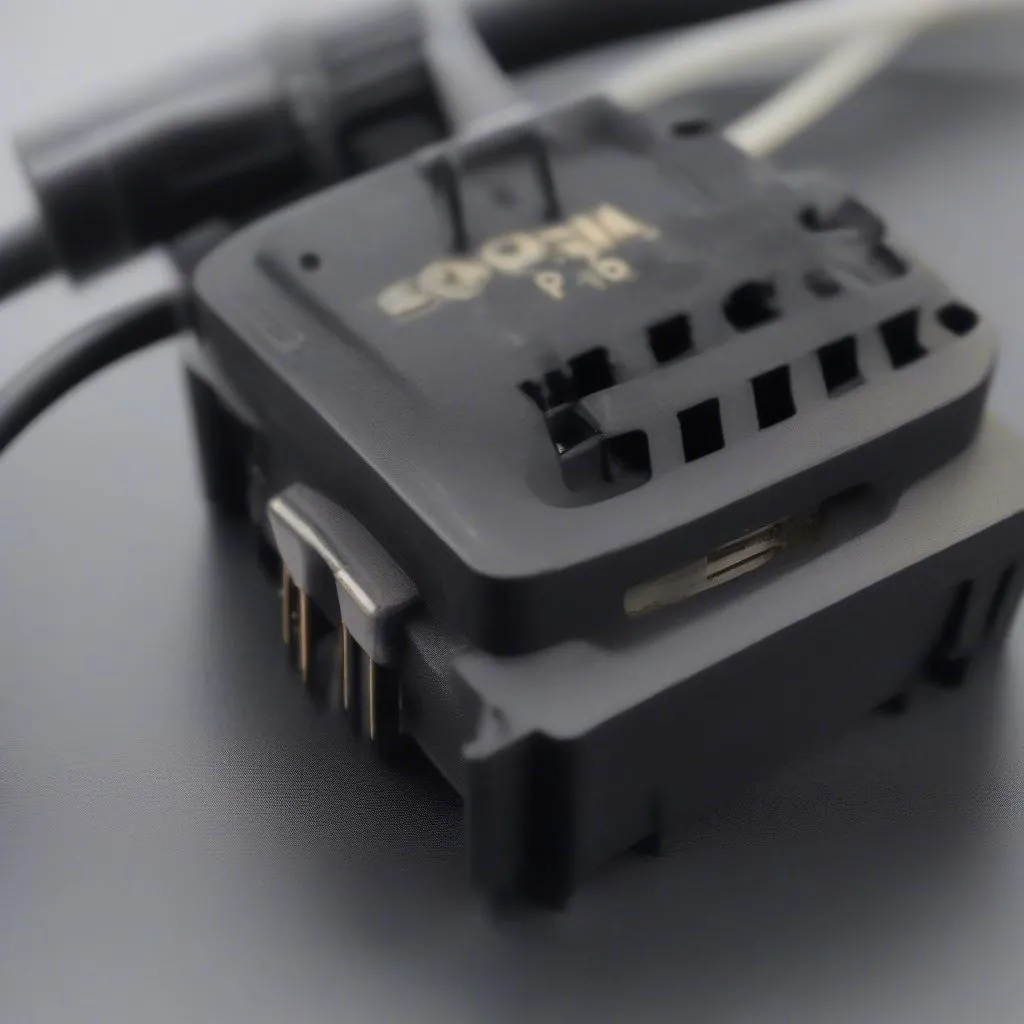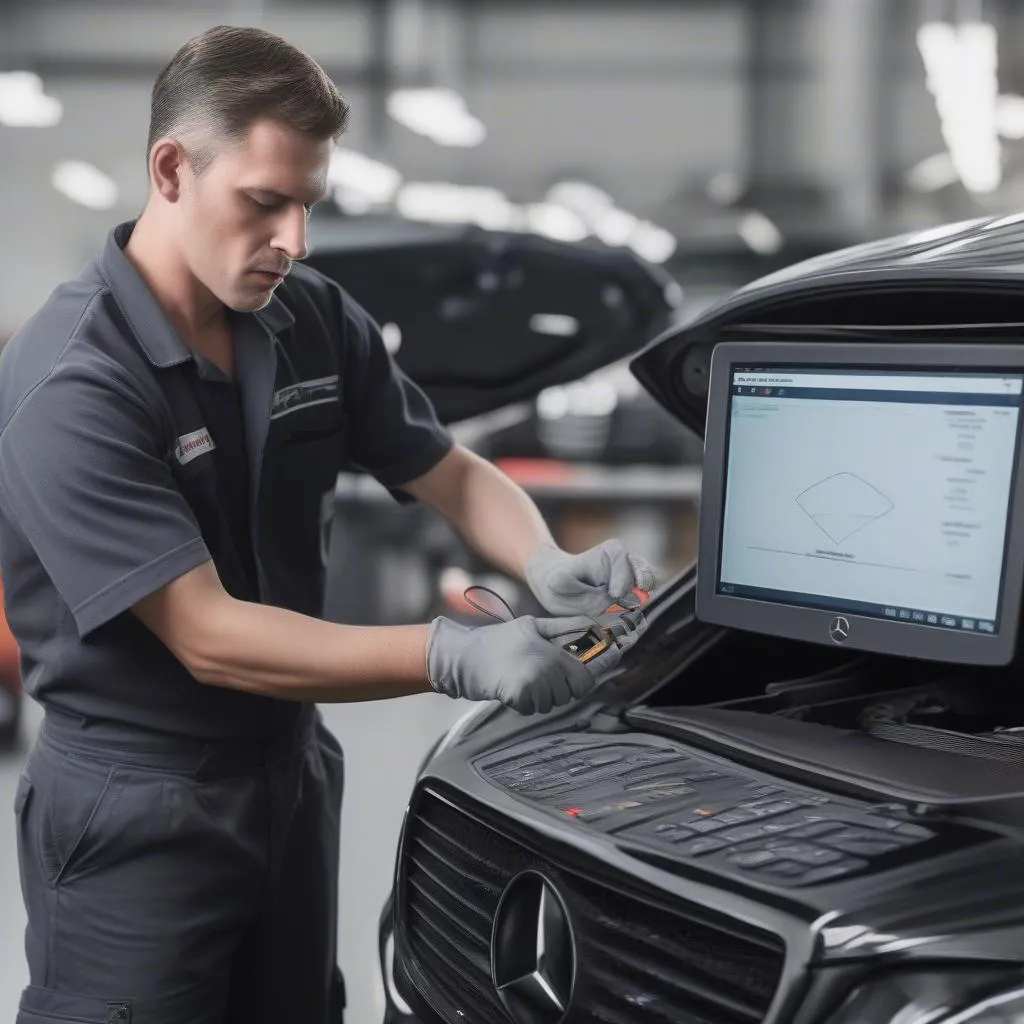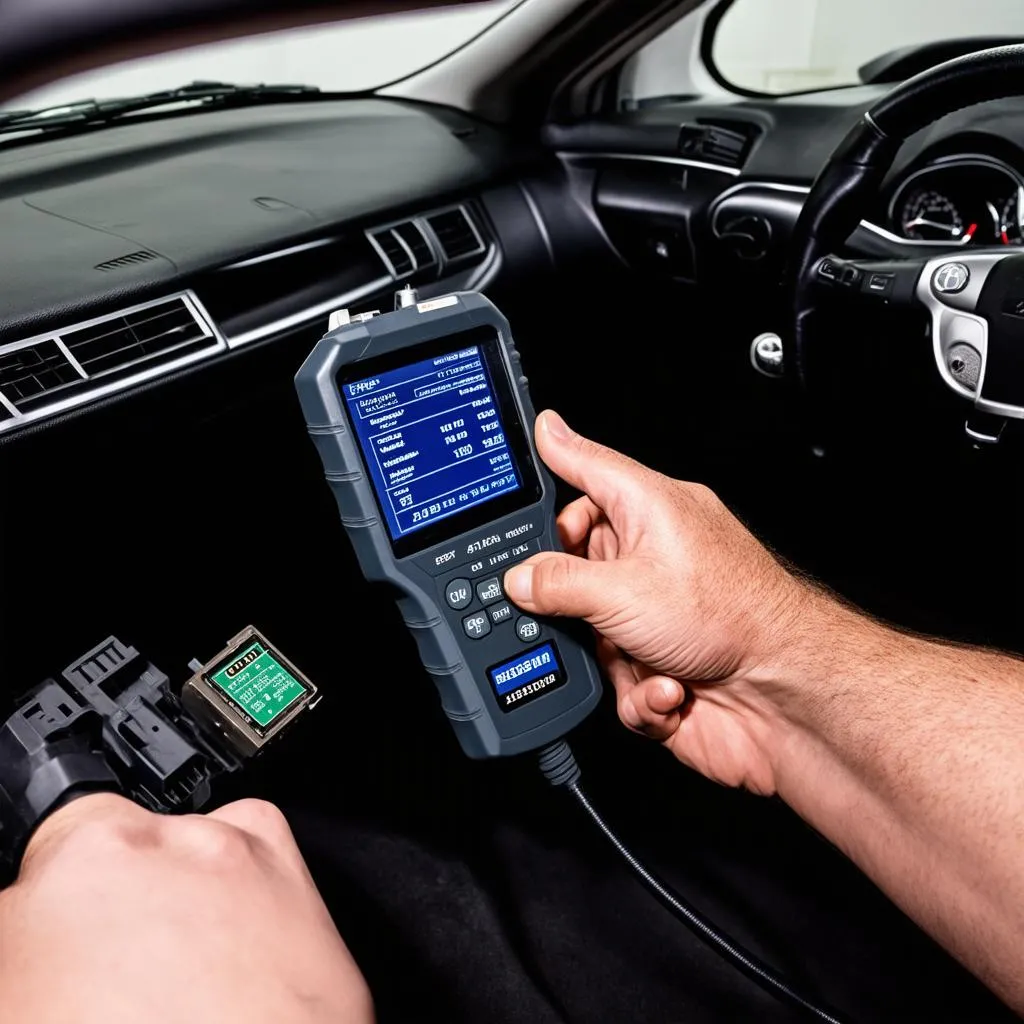The Mercedes Benz 38-pin diagnostic connector, a relic of the past in the automotive world, played a crucial role in the early days of onboard diagnostics. This connector, found predominantly in Mercedes models manufactured before 2001, allowed mechanics and technicians to access the vehicle’s engine control unit (ECU) for troubleshooting and maintenance purposes.
Understanding the Mercedes Benz 38 Pin Connector
Before the advent of OBD-II, manufacturers implemented their proprietary diagnostic systems, and Mercedes was no exception. The 38-pin connector, unique to the brand, facilitated communication with the vehicle’s ECU, enabling technicians to:
- Read and clear diagnostic trouble codes (DTCs): These codes pinpoint specific areas of the engine or other systems that might be malfunctioning.
- Monitor live data streams: Observing parameters such as engine RPM, coolant temperature, and throttle position in real-time aids in diagnosis.
- Conduct actuator tests: These tests help verify the functionality of various components like solenoids, relays, and actuators.
 Mercedes 38 Pin Connector
Mercedes 38 Pin Connector
Launch Diagnostic Tools and the 38 Pin Connector
Launch Tech, a renowned name in automotive diagnostic equipment, offers a range of tools compatible with the Mercedes 38-pin connector. These tools, typically bundled with appropriate adapters, provide a user-friendly interface to access and interact with the vehicle’s ECU.
For instance, the Launch X431 series, known for its comprehensive diagnostic capabilities, supports older Mercedes models equipped with the 38-pin connector. These tools, paired with the correct software, unlock a plethora of diagnostic functions, empowering technicians to efficiently pinpoint and rectify faults.
 Launch X431 Scanner
Launch X431 Scanner
Using a Launch Scanner with the 38-Pin Connector
- Locate the 38-pin diagnostic connector. In most Mercedes models, it resides under the hood, often near the firewall on the driver’s side.
- Connect the Launch diagnostic tool. Use the appropriate adapter cable to connect your Launch scanner to the 38-pin connector.
- Power on the vehicle and the scanner. Turn the ignition to the ‘on’ position, ensuring the engine is not running. Then, power on your Launch diagnostic tool.
- Select the appropriate vehicle model and year. Navigate the scanner’s menu to input the correct details for your Mercedes.
- Access the desired diagnostic functions. Once connected, you can read and clear codes, view live data, perform actuator tests, and more, depending on your scanner’s capabilities.
 Mechanic using Launch Scanner
Mechanic using Launch Scanner
Advantages of Using Launch Diagnostic Tools
- User-friendly interface: Launch scanners are designed for ease of use, even for those unfamiliar with complex diagnostic procedures.
- Comprehensive diagnostic capabilities: Launch tools offer a wide range of functions, going beyond basic code reading and clearing.
- Regular software updates: Launch provides regular software updates, ensuring compatibility with the latest vehicle models and technologies.
Limitations of the 38-Pin Connector and Legacy Systems
While the 38-pin connector served its purpose, it has limitations compared to the standardized OBD-II system:
- Model-specific diagnostics: Unlike the universal OBD-II, the 38-pin system requires specialized tools and knowledge for each Mercedes model.
- Limited data access: The older system provides access to fewer data points compared to the comprehensive range available through OBD-II.
FAQs
Q: Can I use a generic OBD-II scanner on my Mercedes with a 38-pin connector?
A: No, generic OBD-II scanners are incompatible with the Mercedes 38-pin system. You will need a dedicated scanner or an adapter to communicate with the vehicle’s ECU.
Q: My Launch scanner is not communicating with my Mercedes. What could be the issue?
A: Several factors could be at play:
- Incorrect adapter cable: Ensure you are using the correct adapter for your specific Launch scanner and Mercedes model.
- Connector issues: Inspect the 38-pin connector for bent pins, corrosion, or damage.
- Software compatibility: Verify that your Launch scanner has the latest software updates and supports your Mercedes model.
Q: Are there any risks associated with using a diagnostic tool on my Mercedes?
A: While generally safe, it’s crucial to use reputable diagnostic tools and follow the manufacturer’s instructions. Mishandling or using incorrect procedures can potentially damage the vehicle’s electrical system.

